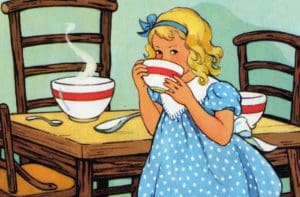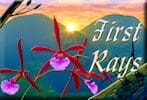Goldilocks of the Plant World

We all know the story of Goldilocks – the little girl who stumbled upon the three bears’ cabin, where she sampled Papa’s, Mama’s, and Baby Bear’s porridge, chairs and beds, trying to find the one that was “just right”. It turns out that orchids are the “Goldilocks” of the plant world.
As one of-, if not the most highly evolved groups of plants on earth, orchids are “niche plants”. Each has needs that are quite specialized, whether that is hot, rainy, humid conditions in deep shade, bright sun with definite dry spells, or cool, high altitudes with plenty of fog – and just about any other combination of conditions you can probably think of.
With species, we can do some research to identify the climatological data for the plant’s range, and with hybrids, we can “take a stab at it” by estimating based upon the species in the plant’s background, but it doesn’t end there! Once we have identified the conditions under which the plant will grow and bloom the best, we then have to take into consideration how our choice of substrate, container, and watering and feeding strategy affects that. Let’s look at the natural variables:
- Temperature:
- cool/intermediate/warm/hot
- day – night variation – none/slight/moderate/great
- seasonal variation – none/slight/moderate/great
- Light levels
- deep shade/mottled/indirect/part day/full sun
- seasonal variation due to deciduous host trees
- Rainfall
- frequent/infrequent/none (but foggy)
- seasonal variation
- Humidity
- low/medium/high/condensing
- diurnal variation
- seasonal variation
- Air movement – stagnant/breezy/windy

Using Phalaenopsis bellina as an example, we can determine that, being native to Borneo, in nature it will experience very hot conditions – lows in the mid-70’s and highs approaching triple digits – low light levels – never direct sunlight – and lots of moisture, with very little variation in any of them, diurnally or seasonally.
Those variables constitute the “demands” of any plant, and we must try to achieve the “Goldilocks point” for each individual, if we wish to grow and bloom it well. A beginning grower will often ask “what is the best potting medium or fertilizer”, but there is no standard answer and how we achieve that might vary, as we have an entire set of variables we introduce to the equation:
- Potting medium
- organic/inorganic
- packing density – very open to very dense
- particle size – fine/medium/coarse
- particle uniformity – same size or mixed sizes
- pore size & airiness – fine/medium/coarse
- water absorption – almost none to sponge-like
- drying rate – quick to very slow
- Container
- material – plastic/clay/glazed/glass
- openings – none/bottom/sides/slots/basket
- aspect ratio – short & wide/tall & narrow
- Water
- purity
- temperature
- frequency of application
- Fertilizer
- formula
- concentration
- frequency of application
- duration of availability
- additives
- Growing conditions
- light
- temperature
- humidity
- air movement
- Personal tendencies – do you want to “mess with” your plants a lot, or are you a “behold from afar” type
In general, we try to either match our growing conditions to the needs of the plant, or acquire plants that need what we can easily provide, but by manipulating the “introduced variables”, it is possible to meet those requirements in any number of ways. All you have to do is think about how certain combinations might get you to the “Goldilocks point” for a particular plant, experiment a bit and be observant, and over time you’ll mature into an expert grower.
